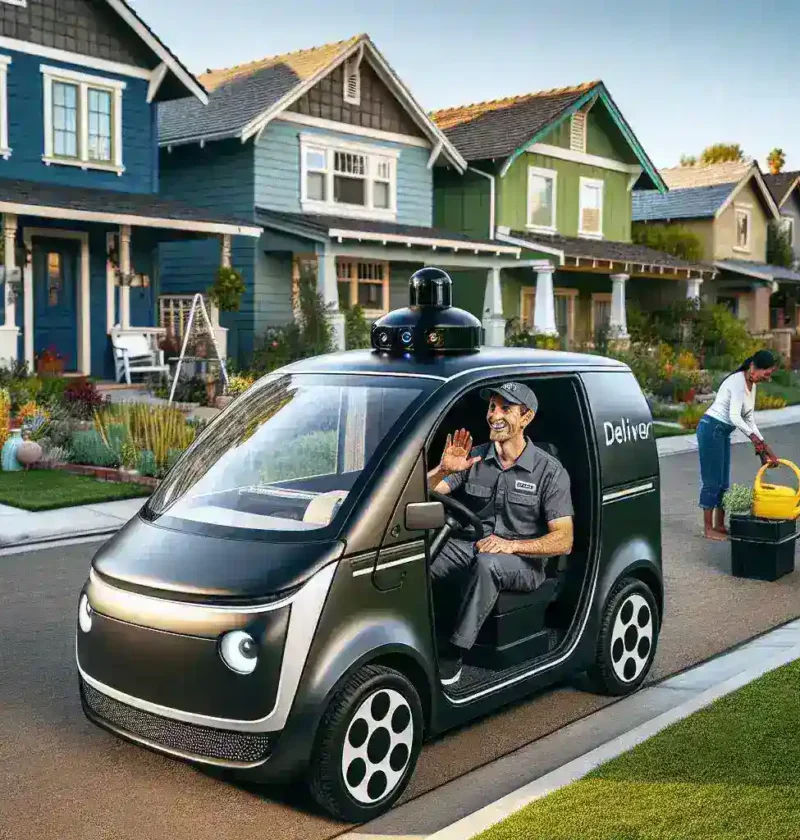Introduction
The United States Postal Service (USPS) has embarked on an exciting journey into the future of logistics by piloting autonomous delivery vehicles in suburban test routes. This venture marks a significant step forward in the realm of automated delivery, promising to transform the way mail and packages are delivered across the nation. In this article, we will explore the history, current developments, benefits, challenges, and future implications of this groundbreaking initiative.
The Historical Context of USPS and Automation
USPS has a long-standing history of adapting to technological advancements. From the introduction of mechanized sorting systems in the 1960s to the adoption of digital tracking systems in the early 2000s, the Postal Service has consistently sought ways to improve efficiency and service delivery. The latest pilot program involving autonomous delivery vehicles is a natural progression in this ongoing evolution.
The Rise of Autonomous Vehicles
The development of autonomous vehicles has gained momentum over the past decade, driven by advancements in artificial intelligence, machine learning, and sensor technology. Companies such as Tesla, Waymo, and Amazon have demonstrated the viability of self-driving technology, not just for transportation but also for delivery services. As these technologies become more refined, USPS aims to leverage them to enhance its operational capabilities.
Current Developments in the Pilot Program
The pilot program launched by USPS is set to take place in various suburban areas across the United States. This initiative involves utilizing self-driving delivery vans equipped with cutting-edge technology to navigate residential neighborhoods. The USPS has partnered with several technology companies to develop vehicles that can operate safely and efficiently in dynamic environments.
Testing Areas and Technology
Initial testing of these autonomous delivery vehicles will occur in select suburban communities where the demographic profile aligns with USPS’s target service areas. The vehicles will be fitted with advanced sensors, cameras, and GPS technology, allowing them to make real-time decisions based on their surroundings. The aim is to gather data on their performance, reliability, and interaction with pedestrians and other road users.
Community Engagement
As part of the pilot program, USPS is actively engaging with local communities to educate residents about the vehicles and their benefits. Information sessions and demonstrations are being organized to familiarize the public with the technology, ensuring that any concerns are addressed proactively. This engagement is crucial for building trust and acceptance of autonomous delivery systems.
Benefits of Autonomous Delivery Vehicles
The integration of autonomous delivery vehicles into USPS’s operations offers several advantages:
- Increased Efficiency: Autonomous vehicles can operate around the clock, reducing delivery times and improving overall service efficiency.
- Cost Savings: By reducing the need for human drivers, USPS can significantly cut labor costs, allowing for better allocation of resources.
- Environmental Impact: Many autonomous vehicles are designed to be electric, contributing to a reduction in carbon emissions and promoting sustainability.
- Enhanced Safety: Equipped with advanced sensors and AI, these vehicles can potentially reduce accidents caused by human error.
Challenges and Considerations
While the benefits of autonomous delivery vehicles are promising, several challenges need to be addressed:
- Regulatory Hurdles: The deployment of autonomous vehicles in public spaces requires navigating complex regulatory frameworks at local, state, and federal levels.
- Public Perception: Gaining the trust of the public is crucial. Concerns about safety, job displacement, and privacy must be carefully managed.
- Technological Limitations: The technology is still evolving. Ensuring that the vehicles can safely navigate diverse environments, including inclement weather and unforeseen obstacles, is essential.
Future Predictions and Implications
The pilot program is just the beginning of what could be a transformative shift in the logistics landscape. If successful, USPS may expand the use of autonomous vehicles to urban areas, further revolutionizing package delivery systems. The implications extend beyond USPS, potentially influencing the broader industry and setting new standards for delivery services.
A New Era for USPS
Should the pilot program prove effective, it could pave the way for a completely new approach to mail and package delivery, enhancing customer experience and operational efficiency. As the USPS continues to innovate, it may play a critical role in shaping the future of logistics in an increasingly automated world.
Conclusion
The USPS’s pilot of autonomous delivery vehicles in suburban test routes signifies a crucial step into the future of postal services. By addressing both the opportunities and challenges of this technology, USPS is not only enhancing its operational capabilities but also adapting to the evolving needs of its customers. With ongoing advancements and community engagement, the success of this initiative could herald a new era for the Postal Service and the logistics industry as a whole.

